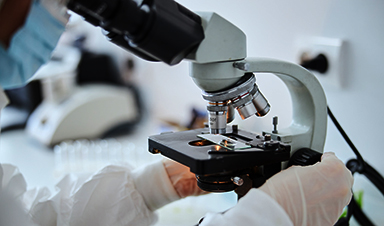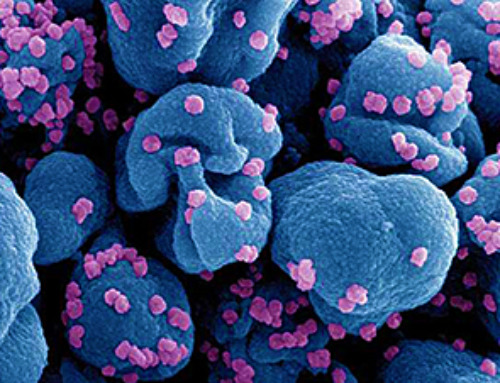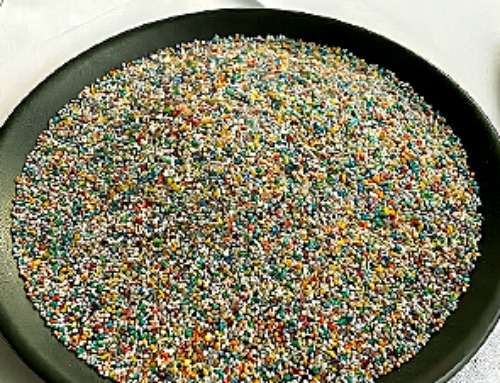Studies in mice confirm that a vaccine candidate could target SARS and MERS strains.
A promising vaccine targeting three lethal coronaviruses has proven effective in preliminary mouse trials, underscoring the potential for a universal coronavirus vaccine.
The research, conducted by experts at the Duke Human Vaccine Institute, was recently published in the journal Cell Reports. This innovative nanoparticle vaccine builds upon a former version that shielded mice and primates from various strains of SARS-CoV-2, the culprit behind COVID-19.
In this study, the vaccine protected mice from SARS-CoV-1, another form of SARS coronavirus that can infect humans, and a MERS coronavirus that has led to periodic, deadly outbreaks around the world.
Vaccine Design and Early Successes
Saunders and colleagues built the tri-valent vaccine using a nanoparticle loaded with a key fragment called a receptor binding domain from each of the coronaviruses. The fragment – a docking site on the virus that enables it to infiltrate the body's cells – provides enough information for immune cells to build an effective response against actual coronaviruses that enter the body.
In earlier studies in mice and primates, the researchers demonstrated that an earlier iteration of the nanoparticle vaccine was effective against multiple SARS-CoV-2 variants. Human tests are planned next year for a version that carries immunogens to different SARS-CoV-2 strains, including those that have dominated since the original outbreak in late 2019.
Expanding the Vaccine's Scope
The current work expands the components of the vaccine to include an additional SARS-related virus and MERS virus. In lab studies, as well as in mice, the researchers found that the vaccine candidate generated inhibitory immune molecules called antibodies against all three pathogenic human coronavirus types.
Importantly, vaccinated mice did not grow sick when challenged with either SARS-like or MERS-like viruses.
"This study demonstrates proof-of-concept that a single vaccine that protects against both MERS and SARS viruses is an achievable goal," Saunders said. "Given that one MERS and two SARS viruses have infected humans in the last two decades, the development of universal coronavirus vaccines is a global health priority."
Reference: "Vaccine-mediated protection against Merbecovirus and Sarbecovirus challenge in mice" by David R. Martinez, Alexandra Schäfer, Tyler D. Gavitt, Michael L. Mallory, Esther Lee, Nicholas J. Catanzaro, Haiyan Chen, Kendra Gully, Trevor Scobey, Pooja Korategere, Alecia Brown, Lena Smith, Robert Parks, Maggie Barr, Amanda Newman, Cindy Bowman, John M. Powers, Erik J. Soderblom, Katayoun Mansouri, Robert J. Edwards, Ralph S. Baric, Barton F. Haynes and Kevin O. Saunders, 18 October 2023, Cell Reports.
DOI: 10.1016/j.celrep.2023.113248
In addition to Saunders, study authors include lead author David R. Martinez, who is now at Yale School of Medicine, and Alexandra Schäfer, Tyler D. Gavitt, Michael L. Mallory, Esther Lee, Nicholas J. Catanzaro, Haiyan Chen, Kendra Gully, Trevor Scobey, Pooja Korategere, Alecia Brown, Lena Smith, Rob Parks, Maggie Barr, Amanda Newman, Cindy Bowman, John M. Powers, Erik J. Soderblom, Katayoun Mansouri, Robert J. Edwards, Ralph S. Baric, and Barton F. Haynes.
News
Older chemical libraries show promise for fighting resistant strains of COVID-19 virus
SARS‑CoV‑2, the virus that causes COVID-19, continues to mutate, with some newer strains becoming less responsive to current antiviral treatments like Paxlovid. Now, University of California San Diego scientists and an international team of [...]
Lower doses of immunotherapy for skin cancer give better results, study suggests
According to a new study, lower doses of approved immunotherapy for malignant melanoma can give better results against tumors, while reducing side effects. This is reported by researchers at Karolinska Institutet in the Journal of the National [...]
Researchers highlight five pathways through which microplastics can harm the brain
Microplastics could be fueling neurodegenerative diseases like Alzheimer's and Parkinson's, with a new study highlighting five ways microplastics can trigger inflammation and damage in the brain. More than 57 million people live with dementia, [...]
Tiny Metal Nanodots Obliterate Cancer Cells While Largely Sparing Healthy Tissue
Scientists have developed tiny metal-oxide particles that push cancer cells past their stress limits while sparing healthy tissue. An international team led by RMIT University has developed tiny particles called nanodots, crafted from a metallic compound, [...]
Gold Nanoclusters Could Supercharge Quantum Computers
Researchers found that gold “super atoms” can behave like the atoms in top-tier quantum systems—only far easier to scale. These tiny clusters can be customized at the molecular level, offering a powerful, tunable foundation [...]
A single shot of HPV vaccine may be enough to fight cervical cancer, study finds
WASHINGTON -- A single HPV vaccination appears just as effective as two doses at preventing the viral infection that causes cervical cancer, researchers reported Wednesday. HPV, or human papillomavirus, is very common and spread [...]
New technique overcomes technological barrier in 3D brain imaging
Scientists at the Swiss Light Source SLS have succeeded in mapping a piece of brain tissue in 3D at unprecedented resolution using X-rays, non-destructively. The breakthrough overcomes a long-standing technological barrier that had limited [...]
Scientists Uncover Hidden Blood Pattern in Long COVID
Researchers found persistent microclot and NET structures in Long COVID blood that may explain long-lasting symptoms. Researchers examining Long COVID have identified a structural connection between circulating microclots and neutrophil extracellular traps (NETs). The [...]
This Cellular Trick Helps Cancer Spread, but Could Also Stop It
Groups of normal cbiells can sense far into their surroundings, helping explain cancer cell migration. Understanding this ability could lead to new ways to limit tumor spread. The tale of the princess and the [...]
New mRNA therapy targets drug-resistant pneumonia
Bacteria that multiply on surfaces are a major headache in health care when they gain a foothold on, for example, implants or in catheters. Researchers at Chalmers University of Technology in Sweden have found [...]
Current Heart Health Guidelines Are Failing To Catch a Deadly Genetic Killer
New research reveals that standard screening misses most people with a common inherited cholesterol disorder. A Mayo Clinic study reports that current genetic screening guidelines overlook most people who have familial hypercholesterolemia, an inherited disorder that [...]
Scientists Identify the Evolutionary “Purpose” of Consciousness
Summary: Researchers at Ruhr University Bochum explore why consciousness evolved and why different species developed it in distinct ways. By comparing humans with birds, they show that complex awareness may arise through different neural architectures yet [...]
Novel mRNA therapy curbs antibiotic-resistant infections in preclinical lung models
Researchers at the Icahn School of Medicine at Mount Sinai and collaborators have reported early success with a novel mRNA-based therapy designed to combat antibiotic-resistant bacteria. The findings, published in Nature Biotechnology, show that in [...]
New skin-permeable polymer delivers insulin without needles
A breakthrough zwitterionic polymer slips through the skin’s toughest barriers, carrying insulin deep into tissue and normalizing blood sugar, offering patients a painless alternative to daily injections. A recent study published in the journal Nature examines [...]
Multifunctional Nanogels: A Breakthrough in Antibacterial Strategies
Antibiotic resistance is a growing concern - from human health to crop survival. A new study successfully uses nanogels to target and almost entirely inhibit the bacteria P. Aeruginosa. Recently published in Angewandte Chemie, the study [...]
Nanoflowers rejuvenate old and damaged human cells by replacing their mitochondria
Biomedical researchers at Texas A&M University may have discovered a way to stop or even reverse the decline of cellular energy production—a finding that could have revolutionary effects across medicine. Dr. Akhilesh K. Gaharwar [...]





















